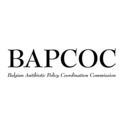In short
When patients get an infection during their stay in the hospital, this can cause a lot of extra suffering and higher costs, such as an additional treatment or a longer hospitalization period. Good quality care can prevent a number of these infections. To improve this care we developed a set of indicators that measure if certain actions that prevent the occurrence of infections during hospitalisation are implemented. Belgian (acute care) hospitals have to participate in the project that collects these indicators. This project, which is called ‘quality indicators for infection prevention and control’, has to improve the quality of the infection prevention and control activities and policies in Belgian hospital.
Project description
‘Healthcare-associated infections (HAIs) are infections occurring after exposure to healthcare, often, but not always, as a consequence of this exposure’ (ECDC, 2008). HAIs are a major cause of morbidity and mortality, which leads to a big extra public healthcare cost. A significant part of these HAIs can be prevented, by having infection prevention and control programmes in place at national and hospital level.
The Belgian Antibiotic Policy Coordination Committee (BAPCOC), who is advised by the Federal Platform for Infection Prevention and Control, defines the quality indicators (QIs). These QIs for infection prevention and control were used for the first time in 2015 in order to measure once a year the quality of the infection prevention and control in hospitals.
The main goal of the quality indicators for infection prevention and control project is improving the quality of infection prevention and control programmes in Belgian acute hospitals by providing QIs related to the priorities as defined by the advisory and consultative bodies and scientific institutions: the Superior Health Council, the federal hospital hygiene (HH) platform and the Belgian Infection Control Society.
The assessed quality indicators define, prioritize and implement strategies and interventions regarding infection prevention and control in hospitals, to improve the quality of care both on hospital level and on national level.
The Sciensano QI project team presents national and regional results through online publication of an annual national report (reports include historic data to enable assessing trends – see the section ‘Associated publications’). Results for hospitals individually are presented via Healthstat. More information about how to consult these reports can be found in the presentation ‘Quality indicators reports in Healthstat’.
Participate as a hospital in the quality indicators project
Belgian hospitals are obliged to monitor the quality of their infection prevention and control programmes on the basis of these quality indicators (see ![]() Royal Decree 22.06.2017). Sciensano coordinates the project. We conduct data collection, analysis and publication of the data.
Royal Decree 22.06.2017). Sciensano coordinates the project. We conduct data collection, analysis and publication of the data.
The hospital QI project responsible enters the data through the online Healthdata platform. Information on accessing Healthdata and registering data via Healthdata can be found at the Heathdata support page. Specific information on registering via Healthdata (HD4DP) and on preparing a CSV file can be found on the page Data Collections (click ‘NSIH-QI’ for the quality indicators for infection prevention and control registration). The denominator data collected at the hospital or care unit level is available in the new version of the denominator and common variables module protocol (French and Dutch).
Hospitals will enter 2023 data by 10 January 2024. The definitions and instructions for completion can be found in the protocol (available in Dutch and French).
To enable the evaluation of IPC programmes in hospitals (see Operational Plan AMR), the BAPCOC and the Federal Platform in IPC who is responsible for the project protocol, decided using the same protocol for data collection in 2023 as used in 2019.
The 2023 national report
on quality indicators for infection prevention and control, 2022 data, is available.
Sciensano's project investigator(s):
Service(s) working on this project
Partners




